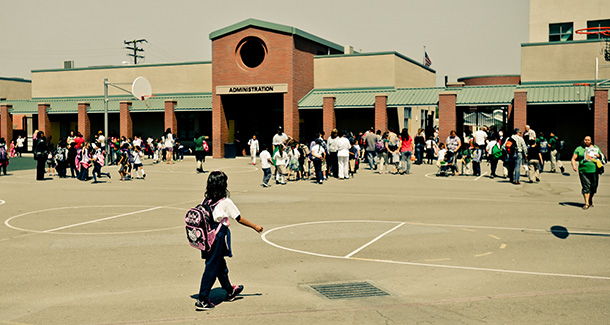
(Photo Credit: Violeta Vaqueiro)
Boom, Bust, Repeat? Part 3: Budget rules will drive where much of the extra money goes—but not how it will be spent
After more than a decade of revenue booms and busts, it feels like déjà vu all over again—with tax receipts coming in as much as $4 billion higher than expected and almost that many ideas for how to spend it.
The truth is, the state’s complex budget formulas will largely determine where these funds go—but that doesn’t mean lawmakers, mindful of the budgetary messes of the last 15 years, can’t make important choices about how this money is spent.
As CA Fwd has pointed out in Boom, Bust, Repeat?, Californians have clearly learned something from the fiscal messes of the past—and there is reason to hope this year won’t be a repeat of 1999 or 2005. Last year, voters approved a robust new budget reserve that will provide a multi-billion dollar fiscal backstop in the years to come. There is also growing awareness about the coming phase-out of Proposition 30’s temporary taxes, which are responsible for $8 billion of the state’s $113 billion General Fund.
Most of the conversation in this year’s budget, though, will be how two of the state’s constitutional spending requirements interact: Proposition 98 and Proposition 2.
Schools, rainy day fund will sweep up revenue windfall
According to the Legislative Analyst’s Office, Proposition 98’s school funding guarantee will sweep up the first $4.4 billion of this year’s revenue growth and as much as 40 cents of every dollar above that. The new budget reserve created by Proposition 2 sets aside 1.5 percent of General Fund revenues each year as well as a portion of spikes in revenue from capital gains, which combined will come to roughly 20 percent of the revenue growth in this two-year period.
Depending on how these two constitutional measures interact—something fiscal experts are still debating—the state could boost per-pupil spending by more than $700 per student and also have a reserve as large as $5 billion. According to the LAO, this year’s budget might even be able to completely pay off the Proposition 98 “maintenance factor”—returning to schools all of the money they’ve been owed since the cuts made during the Great Recession.
While advocates are making the case for urgent investment needs in other areas, the governor seems to see this year’s constitutional limitations as welcomed guide posts on a path of fiscal restraint—requiring the state to invest in priorities from schools and debt service to infrastructure, pension and health care obligations.
Not just where to spend the money—but how
All of this may be true, but even if most of this year’s revenue windfall does go to schools and the rainy day fund, the conversation should not be over.
Because Prop 98 locks in school spending as revenue goes up, this year’s budget will shape the state’s fiscal options for the next half a dozen years. Prop 2 may protect some programs in future recessions—but once the school funding base is set, even a multi-billion dollar reserve won’t prevent cuts in the next downturn.
This year’s budget, in other words, is a prime opportunity to incorporate lessons learned from the past. As CA Fwd’s Lenny Mendonca and Pete Weber pointed out earlier this week: “How lawmakers spend the balance of [school funding, in particular] will have a lot to do with how deep they will have to cut into safety net programs when unemployment increases.”
Revenue windfalls on this scale have been used in the past to dramatically increase K-12 education funding—and rightfully so, since schools remain one of Californians’ top priorities. School expenditures grew by $5 billion between 2005 and 2007, and they will grow dramatically again this year. CA Fwd recently released a report focusing on how to sustainably increase vital investments in education programs.
Just because there is more money going to schools this year doesn’t mean state and local leaders can’t deliberate seriously about how districts can most effectively spend it. In the last two recessions, many of the new resources going to schools went straight into operating budgets—leading to painful cuts when revenues dropped a few years later.
California schools now have more funding flexibility than they’ve had in 40 years—thanks to the new Local Control Funding Formula—and it can and should be up to the state’s 1,000 school districts to decide how to spend their resources.
But there are ways this year’s budget can help schools prepare for the next dip in revenues. This could involve incentives that push school officials to focus a portion of Prop 98 funds on capital improvements, technologies, and retirement benefits, for example. Or the budget might just encourage schools to analyze how they would spend this money if they knew it was going away in a year or two—which it might very well do.
CA Fwd strongly supports moving authority over fiscal choices to the level of government responsible for delivering results—in this case, local school districts. It is equally important that state and local leaders be on the same page about the reliability of these revenues—and work together to use money in this boom in ways that improve outcomes, while also reducing chances teachers will be pink-slipped in the future.
NEXT > Part 4: Why now is the time to spend growing revenues on reducing growing cost drivers
Read the rest of “Boom, Bust, Repeat?”

